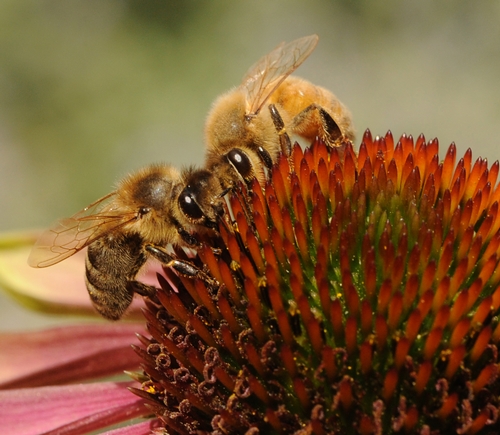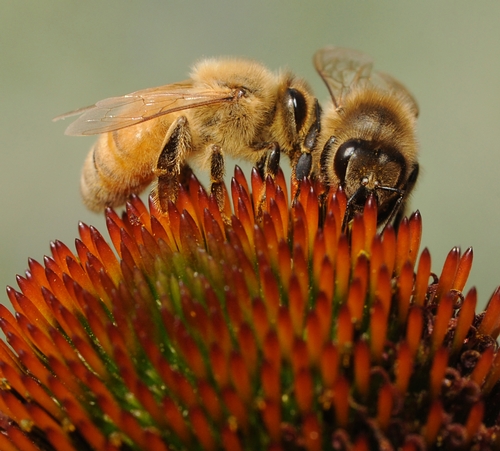The purple coneflower (Echinacea purpurea) is a favorite among the autumn plants blooming in the Häagen-Dazs Honey Bee Haven, the half-acre bee friendly garden planted last fall next to the Harry H. Laidlaw Jr. Honey Bee Research Facility, UC Davis.
The purple coneflower, which looks like a conehead surrounded by drooping petals, is endemic to eastern and central North America.
It's a common sight to see dark and light-colored honey bees foraging on the coneflowers. The darker bees, New World Carniolans (the line belonging to bee breeder Susan Cobey and located at the Laidlaw bee yard) and the Italians (the most common bee in the United States) share many a coneflower.
Yes, they all get along.
The haven, open year around at no charge, is located on Bee Biology Road west of the central campus. It was designed as a year-around food source for the Laidlaw bees and other pollinators; to raise public awareness of the plight of the bees; to provide information on what folks can plant in their own gardens to attract bees; and as a research garden.
What to plant for autumn foraging? Consider the coneflower!
Attached Images:

Duo

Pollinator Partners

Close-Up